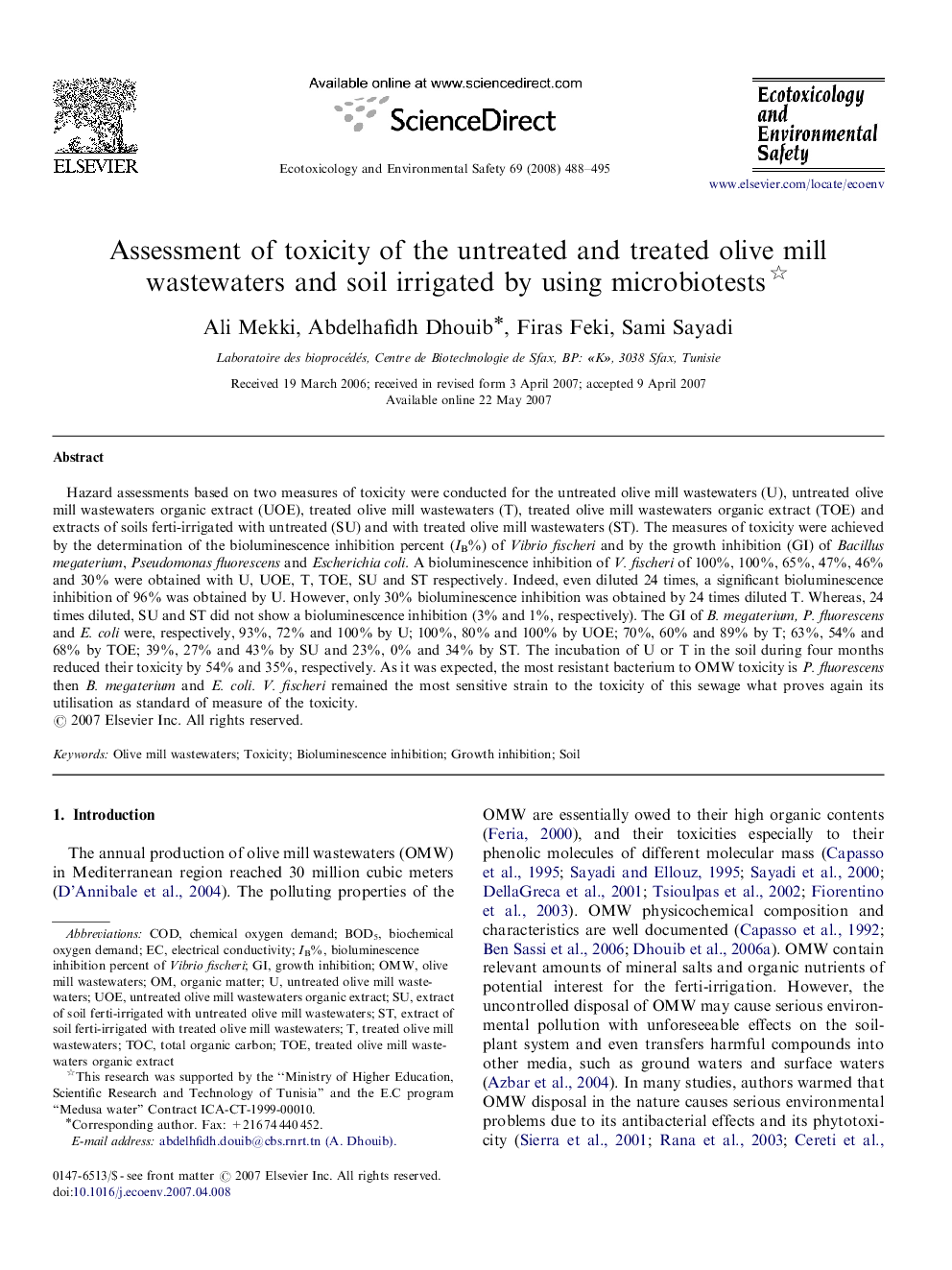| Article ID | Journal | Published Year | Pages | File Type |
|---|---|---|---|---|
| 4422299 | Ecotoxicology and Environmental Safety | 2008 | 8 Pages |
Hazard assessments based on two measures of toxicity were conducted for the untreated olive mill wastewaters (U), untreated olive mill wastewaters organic extract (UOE), treated olive mill wastewaters (T), treated olive mill wastewaters organic extract (TOE) and extracts of soils ferti-irrigated with untreated (SU) and with treated olive mill wastewaters (ST). The measures of toxicity were achieved by the determination of the bioluminescence inhibition percent (IB%) of Vibrio fischeri and by the growth inhibition (GI) of Bacillus megaterium, Pseudomonas fluorescens and Escherichia coli. A bioluminescence inhibition of V. fischeri of 100%, 100%, 65%, 47%, 46% and 30% were obtained with U, UOE, T, TOE, SU and ST respectively. Indeed, even diluted 24 times, a significant bioluminescence inhibition of 96% was obtained by U. However, only 30% bioluminescence inhibition was obtained by 24 times diluted T. Whereas, 24 times diluted, SU and ST did not show a bioluminescence inhibition (3% and 1%, respectively). The GI of B. megaterium, P. fluorescens and E. coli were, respectively, 93%, 72% and 100% by U; 100%, 80% and 100% by UOE; 70%, 60% and 89% by T; 63%, 54% and 68% by TOE; 39%, 27% and 43% by SU and 23%, 0% and 34% by ST. The incubation of U or T in the soil during four months reduced their toxicity by 54% and 35%, respectively. As it was expected, the most resistant bacterium to OMW toxicity is P. fluorescens then B. megaterium and E. coli. V. fischeri remained the most sensitive strain to the toxicity of this sewage what proves again its utilisation as standard of measure of the toxicity.
